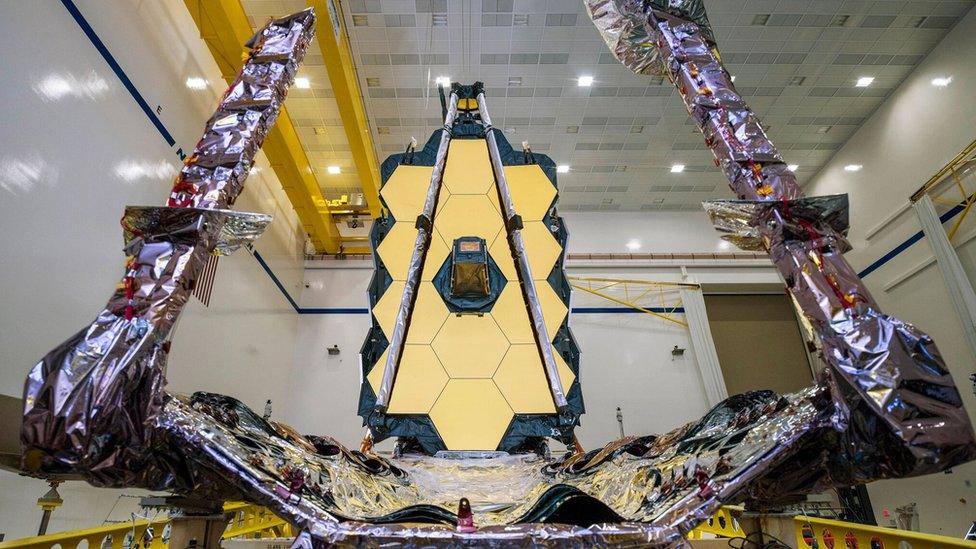The telescope that looks further back in time
- Published
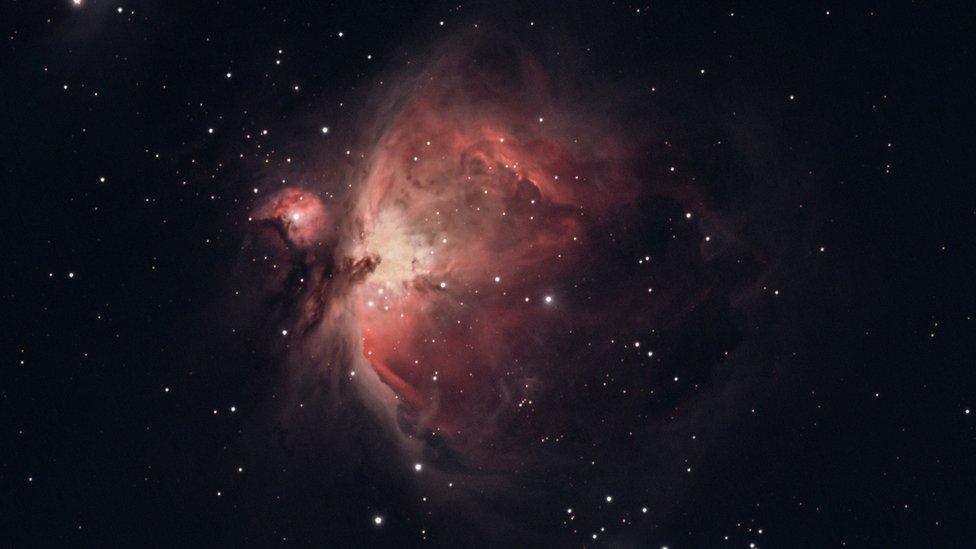
A team of astronomers and engineers in Edinburgh have constructed an instrument that can look further back in time than ever before.
It is a key part of an international mission to launch a huge new telescope a million miles from Earth.
The James Webb Space Telescope (JWST) is years behind schedule and billions of dollars over budget.
But scientists say it will have the ability to detect any galaxy in the universe.
How can you look back in time?
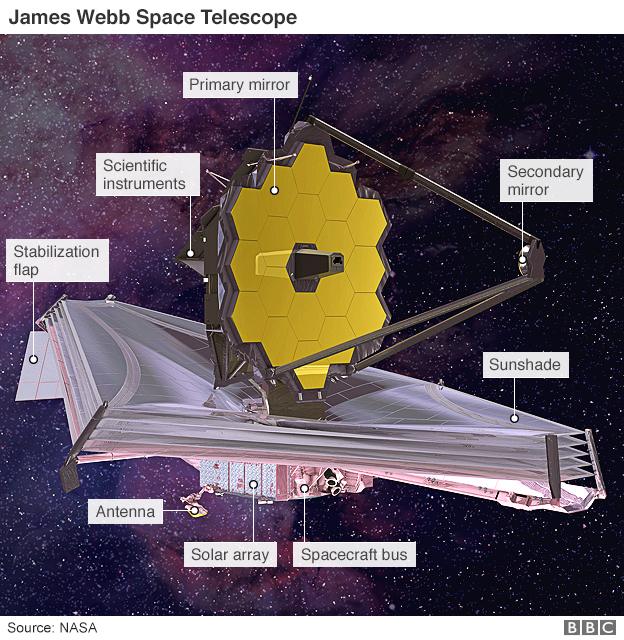

The telescope will be fitted with a Mid Infrared Instrument (MIRI), which is one of four key detectors.
MIRI will be able to look back in time to just a few hundred million years after the Big Bang - thought to have happened more than 13.5 billion years ago.
Speed of light
This ability to look back in time is based on the fact that even light has a speed limit.
It bowls along at 186,000 miles per second. That means that the natural light reaching us now left the sun more than eight minutes ago.
However, the larger the distance that you observe in the universe, the more time has passed since the light you are observing set off on its journey towards you.
So if you look at a star that is 30 light years away, that is what it looked like 30 years ago. The same applies to stars that are millions of light years away.

Contamination control engineers inspect the Mid-Infrared Instrument in the giant clean room at NASA
The telescope is perfect for studying those worlds and distant planets that orbit other suns - known as exo-planets because they exist outside our solar system.
The existence of the first exo-planet was confirmed in 1995. Now we know of more than 4,000 of them.
MIRI will allow astronomers to look at them in greater detail, including looking through their atmospheres for tantalising signs of extra-terrestrial life.
How does it work?
Like all space telescopes, the JWST starts with an advantage over its earthbound counterparts.
There is no atmosphere to distort our view of the stars, so stars do not twinkle in space.
All of the JWST's instruments will observe infrared light. One advantage of that is that infrared can pass through the interstellar dust that blocks visible light.
Another reason is that visible light travelling from a faraway star is stretched on its way to us.
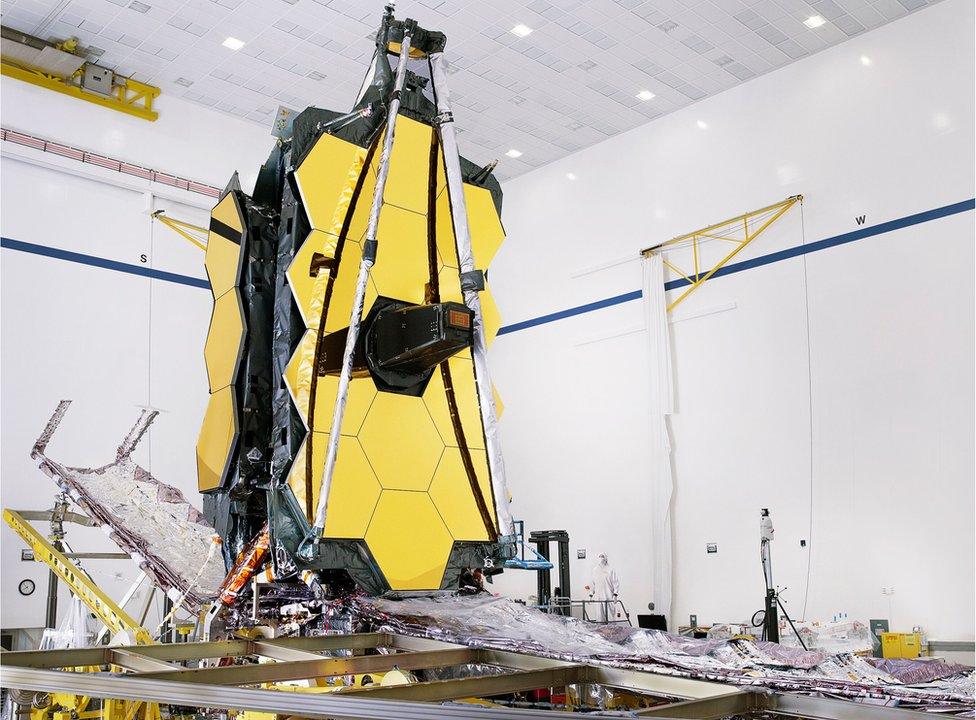
JWST's big mirror can fold back - to make it fit inside its launch rocket
Its wavelength gets longer, meaning light that was in the range we humans can see has shifted down the spectrum into the infrared.
The effect is called redshift, and means that if you want to look further back in time, you must look at things which appear invisible to us.
However, these "invisible" objects are not invisible to the James Webb telescope. Three of its detectors are tuned to the near infrared. As the term suggests, that is just beyond the reds we can see.
But MIRI can look deeper, into the mid infrared. So further away and longer ago.

Northrop Grumman engineers lower the telescope segment on to the shield and spacecraft
Prof Alistair Glasse is the lead scientist on MIRI and explained how the detector works.
"It can see the colours of objects, for example, that are approximately at room temperature," he said.
"That makes it particularly interesting if you want to study planets orbiting other stars."
And there is more, because MIRI will be able to look back almost to the dawn of the universe.
MIRI's European Principal Investigator Prof Gillian Wright said: "We think that the first stars that formed were very big and they started the chain of making the elements and the stars we see around us.
"We don't know very much about [this era]. We know what the structure of the universe looked like shortly after the Big Bang, and we know from Hubble and the other missions what the galaxies look like now or in later epochs.
"But the little piece in the middle? How did the first ones form? We don't know very much about that era."
A mirror larger than Hubble's
The JWST involves NASA, European Space Agency (ESA) and the Canadian Space Agency. It is a huge undertaking - literally.
The telescope's 6.5m mirror is several times larger than that of Hubble's. In its working configuration it is too big for any rocket, so must be unfolded in space.
So too the JWST's huge sunshield, designed to keep its working temperature just a few degrees above absolute zero.
It is made of five delicate layers as thin as clingfilm, which will have to be stretched into place.
The JWST is being exhaustively tested here on Earth because it is going where no-one can fix it.
It will orbit L2, a point in space where the gravitational pull of the Sun and Earth are in balance - roughly a million miles away from here.
The mission, scheduled for 2021, is planned to last less than six years.
- Published7 September 2018
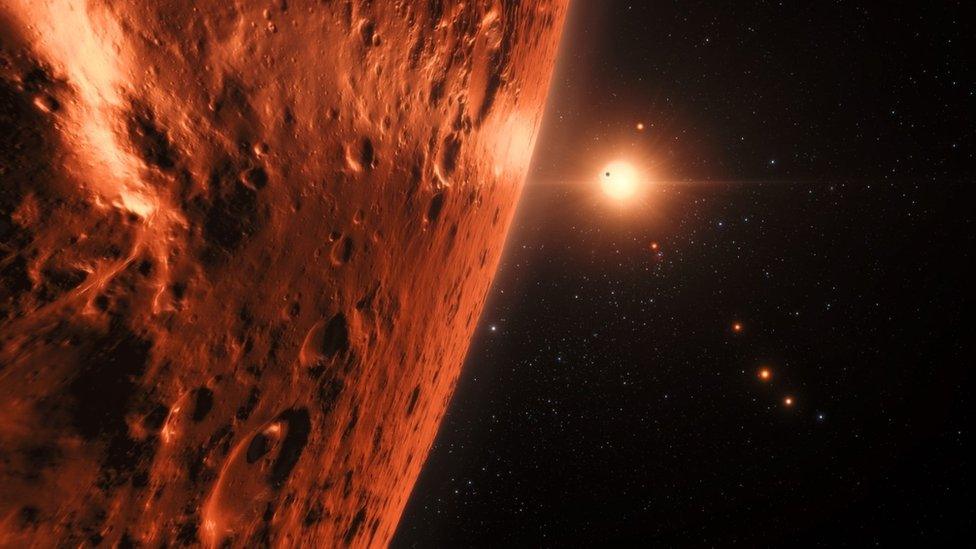
- Published28 August 2019
